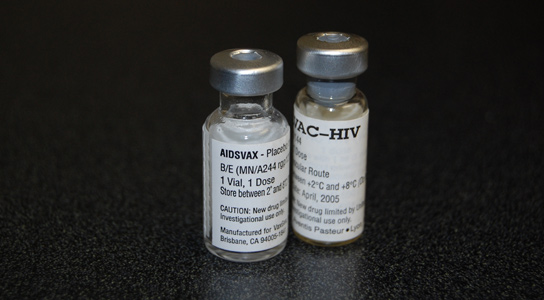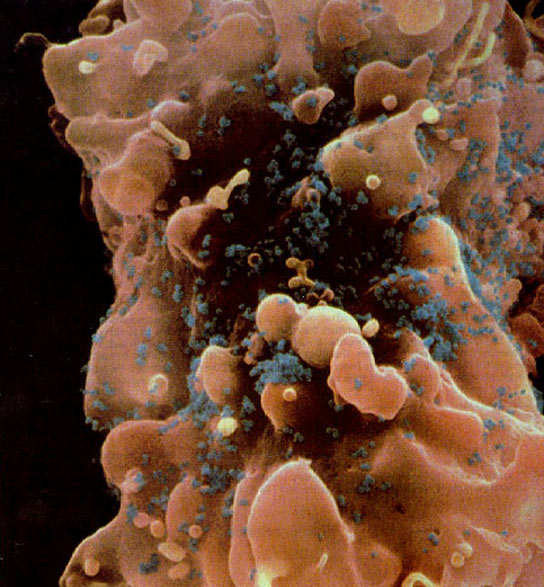
A new vaccine trial has revealed a weak spot in HIV, which could lead to an effective vaccine against AIDS. The vaccine turns the immune system against the virus, and offers more protection from infections.
The scientists published their findings in the journal Nature. The results were also presented at the AIDS Vaccine 2012 Conference in Boston, Massachusetts earlier this week. Three years ago, the RV144 trial was somewhat successful in dealing with AIDS. It scored a success and saw a reduction in HIV infections. However, scientists were puzzled by the vaccine’s low response rate of 31%.

Last year, it was revealed that the patients who responded to the vaccine and fended off HIV produced antibodies against a specific part of the virus’ protein shell, which is called the V1/V2 loop. This study shows that the people who were vaccinated and still contracted HIV had been infected by viruses that had mutations in the V2 portion.
The team was led by Morgane Rolland and Jerome Kim at the US Military HIV Research Program in Silver Spring, Maryland. They examined 936 HIV sequences collected from 44 trial participants who received the RV144 trial and were infected. The trial was randomized, so any systematic differences in the viral DNA sequences between the two groups were due to the selective pressure by the vaccine in favor of the viruses that do not match the vaccine.
There were two mutations that seemed to be linked to the success of the vaccination, which were located in the V2 region of the V1/V2 loop. People who received the vaccine were 80% less likely to be infected by viruses with these mutations, compared to people who got a placebo. This implies that the vaccine created an immune response that prevented certain viruses from infecting them. Only viruses with different sequences at those two sites had a chance at infection.
Now, vaccine developers have to improve the response against V2. It is hoped that a booster will be produced and will lead to a stronger, long-lasting response against HIV and its V2 region.
Reference: “Increased HIV-1 vaccine efficacy against viruses with genetic signatures in Env V2” by Morgane Rolland, Paul T. Edlefsen, Brendan B. Larsen, Sodsai Tovanabutra, Eric Sanders-Buell, Tomer Hertz, Allan C. deCamp, Chris Carrico, Sergey Menis, Craig A. Magaret, Hasan Ahmed, Michal Juraska, Lennie Chen, Philip Konopa, Snehal Nariya, Julia N. Stoddard, Kim Wong, Hong Zhao, Wenjie Deng, Brandon S. Maust, Meera Bose, Shana Howell, Adam Bates, Michelle Lazzaro, Annemarie O’Sullivan, Esther Lei, Andrea Bradfield, Grace Ibitamuno, Vatcharain Assawadarachai, Robert J. O’Connell, Mark S. deSouza, Sorachai Nitayaphan, Supachai Rerks-Ngarm, Merlin L. Robb, Jason S. McLellan, Ivelin Georgiev, Peter D. Kwong, Jonathan M. Carlson, Nelson L. Michael, William R. Schief, Peter B. Gilbert, James I. Mullins and Jerome H. Kim, 10 September 2012, Nature.
DOI: 10.1038/nature11519
Never miss a breakthrough: Join the SciTechDaily newsletter.
Follow us on Google and Google News.